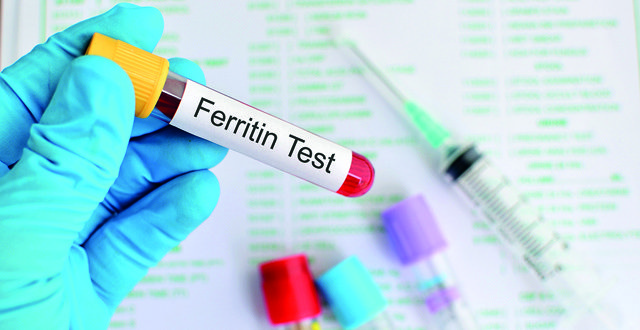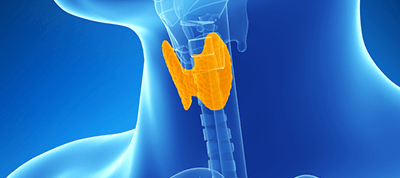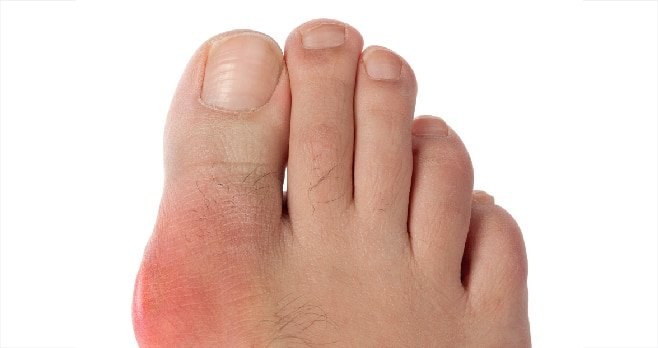Hereditary haemochromatosis (HH) is the commonest inherited condition in Ireland. HH results from a failure to limit dietary iron absorption, leading to a variably progressive accumulation of toxic iron in multiple organs. Untreated, HH can cause non-specific symptoms such as severe fatigue and arthralgia and tissue damage such as arthritis, liver fibrosis/cirrhosis, liver cancer, diabetes and cardiomyopathy. Treatment with repeated phlebotomy is a highly effective means to normalise iron levels and prevent/ameliorate disease complications.
HH was first described over 150 years ago; the gold-standard therapy was established over 50 years ago and the major scientific breakthrough came over 20 years ago – so what is new in HH?
Pathogenesis clarified
The cause of iron build-up relates to the deficient production of the iron regulatory hormone hepcidin, discovered in 2001. Hepcidin is secreted by the liver in response to increasing iron levels and acts to limit circulating iron through the restriction of dietary iron absorption and the release of iron from senescent red cells. In HH, the most common reason for this deficiency is a defective HFE protein in the liver, which under normal conditions can sense iron levels and signal to increase hepcidin production. The central role of the liver in the pathogenesis of HH was confirmed in a 2014 French study that demonstrated that HH could be essentially cured by liver transplantation, which normalised hepcidin levels and prevented recurrence of iron overload.
Origins of HFE mutations revealed
What makes HH so relevant to Ireland is that we have the highest rate of the condition worldwide. In a 2001 study, Irish researchers screening 1,002 neonates for genetic variants found that 5 per cent of individuals were at risk of developing HH and the frequency of the potentially pathologic C282Y mutation in the HFE gene was the highest ever reported, at 11 per cent. This led HH to be known as the ‘Celtic curse’. Using whole genome data, a recent 2016 study led by researchers from Trinity College Dublin and Queens University Belfast identified the two most common HFE variants, the C282Y and H63D mutations, in remains from pre-historic individuals buried in Ireland. They found that the C282Y mutation was likely to have originated near the Black Sea in central Europe and came to Ireland with migrant farmers, ultimately persisting and concentrating in Celtic lands. A popular reason for this is the ‘Iron thrifty genetic model’ outlined by Pietrangelo in 2015, which explains that the shift to an iron-poor, agricultural-based society during Neolithic times favoured those who could extract more iron out of their diet, an advantage conferred by even a single C282Y variant.
Variable disease penetrance remains a mystery
Given the great prevalence of HFE variants in the Irish population, one may wonder why the almost 50,000 individuals estimated to be C282Y homozygous in Ireland are not flooding our health service? The biochemical penetrance of HH (defined as increased ferritin: ≥300µg/L for men and ≥200µg/L for women, and increased transferrin saturation (TS): >45 per cent) is seen in 82 per cent of men and 55 per cent of women who are C282Y homozygous, indicating that the majority of these individuals will demonstrate abnormal iron metabolism, and perhaps are failing to be detected. Moreover, those with a serum ferritin >1,000µg/L have an approximately 70 per cent chance of having cirrhosis, which is associated with a significant increase in liver cancer risk, highlighting the need for early diagnosis and the evaluation by a hepatologist to implement screening, if appropriate. The advent of non-invasive tests to assess liver fibrosis, such as transient elastography (Fibroscan), has meant that liver biopsy is now rarely necessary at diagnosis.
While initial reports suggested a high mortality associated with HH, research from the National Liver Transplant Unit in St Vincent’s University Hospital, Dublin, found that only 2 per cent of liver transplants were performed for HH-related liver disease, despite the potential prevalence of the condition in Ireland.
Similarly, large population screening studies from Australia and the US found that significant iron overload due to HH was seen in about 35 per cent and 6 per cent of C282Y homozygous males and females, respectively, by the age of 65 years, indicating that not everyone with the genetic risk variants develops the disease; ie, HH has a variable penetrance.
The explanation for this disease variability in HH has yet to be clarified. Despite a long-awaited genome-wide association study (GWAS) reported in 2015, along with other subsequent studies, no genetic modifier has been reliably reproduced and validated in HH individuals. Environmental factors are well documented; of the liver transplants done for HH in Ireland, almost half of individuals had another risk factor for liver disease, such as alcohol excess or viral hepatitis.
Alcohol has been shown to suppress hepcidin production, leading to a further increase in iron absorption and progression of the disease. Indeed, it is felt that the lower the hepcidin level (termed ‘hypohepcidinaemia’), the greater the iron overload and disease burden.
In contrast, obese patients were found to have higher hepcidin levels, as the hormone is also produced by adipose tissue, potentially leading to milder disease.
Screening revisited
Despite the lower frequency of disease complications in HH than originally thought, the evidence for treatable morbidity, separate to end-organ damage, is accumulating. This morbidity specifically relates to fatigue, arthralgia and reduced quality-of-life. A recent randomised control trial comparing phlebotomy with sham pheresis demonstrated an improvement in fatigue, even in those with mild iron overload (serum ferritin 300-1,000µg/L). A 2017 survey of almost 2,000 individuals conducted by the UK Haemochromatosis Society revealed that over 80 per cent respondents experienced fatigue or joint pain (similar to other self-reported surveys), but those who had been successfully de-ironed were approximately 50 per cent more likely to report no/mild symptoms. Taking these factors into account, Australian researchers recently found that screening adult males ≥30 years and females ≥45 years of northern European ancestry with genetic testing and/or TS levels was cost effective. This has led to leading experts in the field repeating a call to initiate screening of high-risk individuals.
Benefits of treatment highlighted with new targets
Fewer modern therapies can boast the benefits attributed to venesection, where a pint of blood is withdrawn on a week-fortnightly basis until iron stores are normalised. For instance, venesection for HH has been associated with an improvement in quality-of-life, cognition, fatigue, insulin secretion, cardiac and liver function, a reversal of liver fibrosis in 50 per cent and of cirrhosis in 45 per cent of patients, a significant reduction in liver cancer risk, extra-hepatic cancer risk, incidence of cardiovascular disease and a normalisation of life expectancy in those treated in time. It is therefore facile to see why the treatment of HH has remained unchanged for decades and while new therapies such as hepcidin agonists/mimetics and small molecule modulators of iron metabolism are entering clinical trials, they will be marketed only for rare causes of iron overload. Instead, ways of reducing the need for venesection in HH may be considered, such as the use of proton pump inhibitors, which were recently found to reduce intestinal iron absorption in a small randomised study.
The latest treatment guidelines for HH were published by the British Society for Haematology in 2017. Amongst their recommendations was a more conservative target for maintenance venesection than previously: Both a ferritin <50µg/L and a TS <50 per cent. This change stemmed from a single French cohort study, which found that prolonged elevation in TS during long-term follow-up was associated with increased morbidity, particularly joint symptoms. Indeed, a high TS level is thought to indicate the presence of unbound, more toxic forms of iron in the bloodstream. Regular blood donation, once de-ironed, remains an important recommendation and a valuable resource. The recent UK Haemochromatosis Society report (see page 30 for more detail) found that one-third of patients were unaware of this option, highlighting the need for improved patient and physician education.
Conclusion
Ireland has the highest prevalence of HH in the world, however, it often remains undiagnosed, in part due to non-specific symptoms at presentation, but also a lack of awareness amongst both the public and healthcare professionals. While life-threatening complications are thankfully relatively rare, HH is associated with significant morbidity that can respond to treatment, which is highly effective, supporting a renewed argument for screening of high-risk individuals.
References available on request










How can I get the reference list? I have HH, and would like to read the studies mentioned in this article, and provide them to my doctors (I’m in the USA) – in particular, the one relating high transferrin saturation with free iron in circulation, as it seems directly applicable to my case. Thank you!
How can I get the reference list? I have HH, and would like to read the studies mentioned in this article, and provide them to my doctors (I’m in the USA) – in particular, the one relating high transferrin saturation with free iron in circulation, as it seems directly applicable to my case. Thank you!
How can I get the reference list? I have HH, and would like to read the studies mentioned in this article, and provide them to my doctors (I’m in the USA) – in particular, the one relating high transferrin saturation with free iron in circulation, as it seems directly applicable to my case. Thank you!
How can I get the reference list? I have HH, and would like to read the studies mentioned in this article, and provide them to my doctors (I’m in the USA) – in particular, the one relating high transferrin saturation with free iron in circulation, as it seems directly applicable to my case. Thank you!
How can I get the reference list? I have HH, and would like to read the studies mentioned in this article, and provide them to my doctors (I’m in the USA) – in particular, the one relating high transferrin saturation with free iron in circulation, as it seems directly applicable to my case. Thank you!
How can I get the reference list? I have HH, and would like to read the studies mentioned in this article, and provide them to my doctors (I’m in the USA) – in particular, the one relating high transferrin saturation with free iron in circulation, as it seems directly applicable to my case. Thank you!